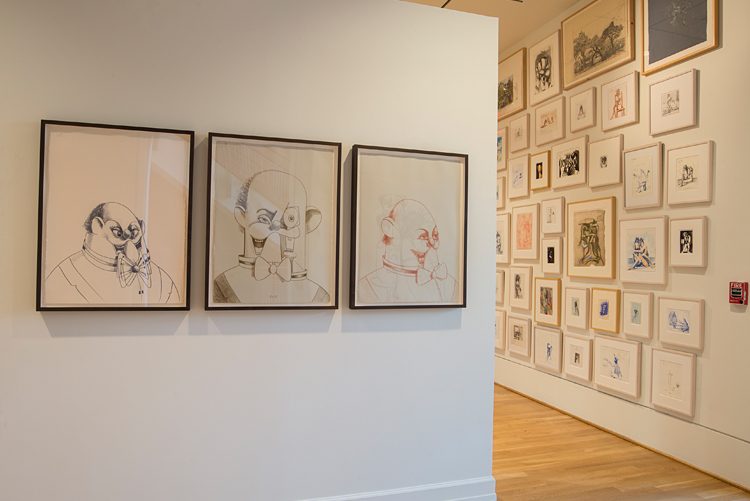German artist George Condo has attracted international attention for decades. A man who befriended Basquiat, worked for Warhol, and collaborated with Kim and Kanye was in DC for the opening of his show The Way I Think here at the Phillips. When speaking with friends about what may be my favorite DC show, mention of the name George Condo usually invites a response along the lines of, “Oh yeah, the Kanye guy.” Condo received a flood of media attention in 2010 when his design for Kanye West’s album My Beautiful Dark Twisted Fantasy was deemed “explicit” by providers like Wal-Mart and iTunes. “The superimposition of people’s perceptions on a cartoon is shocking,” Condo responded at the time. This would not be the last attack on Condo’s art, as his painting on a handbag for Kim Kardashian in 2013 met similarly skeptical reviews on social media.
Through instances like these, Condo’s work raises the issue of censorship. For Condo in particular, censorship is stifling, and it’s easy to see why in The Way I Think, an array of over 200 works arranged and installed with Condo’s guidance. The exhibit reads like Condo’s own train of thought, complete with piles of diligently kept notebooks and sketchbooks. The sheer volume of work in the exhibition is breathtaking, and the alarming nature of Condo’s figures are captivating. The exhibit is laid out just as it sounds; the way the artist thinks. The exhibition revives the age old question of whether art—any art—should be censored. Can we censor thought? What about thought on paper? Condo’s reliance on his own memory and psychology as sources of artistic inspiration make it difficult to imagine a “parental advisory” sticker plastered across one of his pieces.
It is probable that The Way I Think will elicit a range of emotional responses as wide as Condo’s artistic styles. Without question, George Condo’s intersections with music, celebrity, and popular culture make his art irresistibly interesting to any viewer. I think, however, it is the personal depth and furious imagination of the artist which will make this particular exhibit magnetic and intimate for each and every visitor.
Elizabeth Federici, Marketing & Communications Intern

